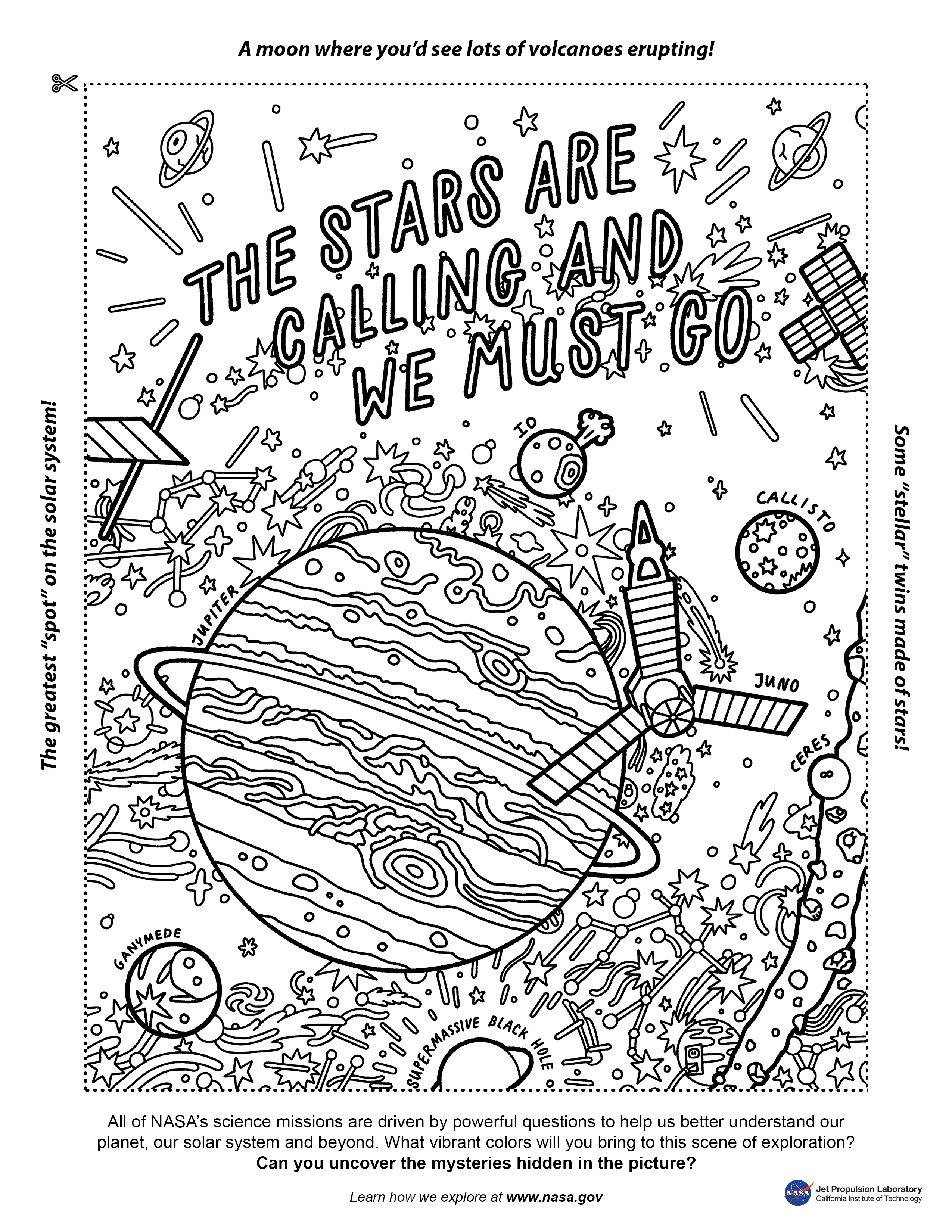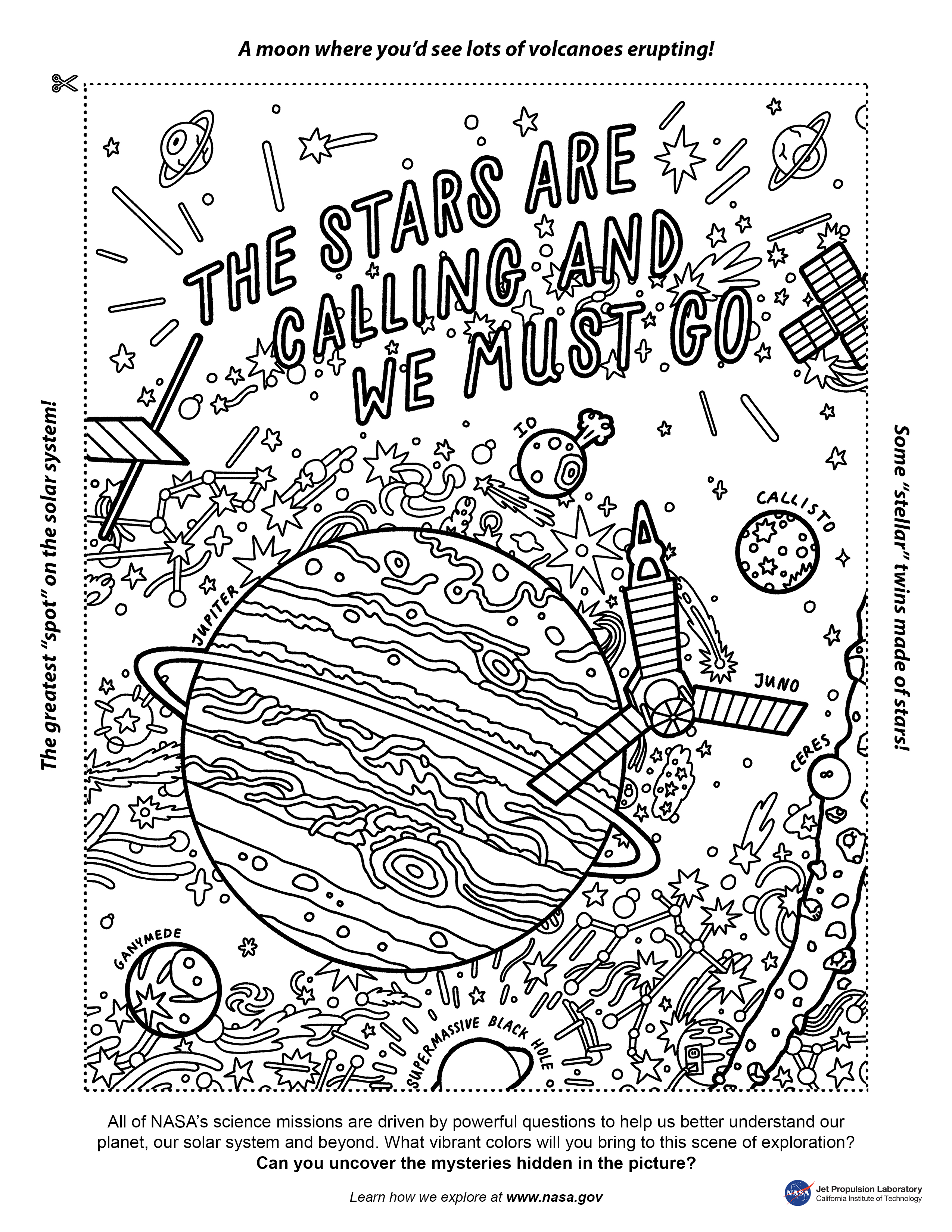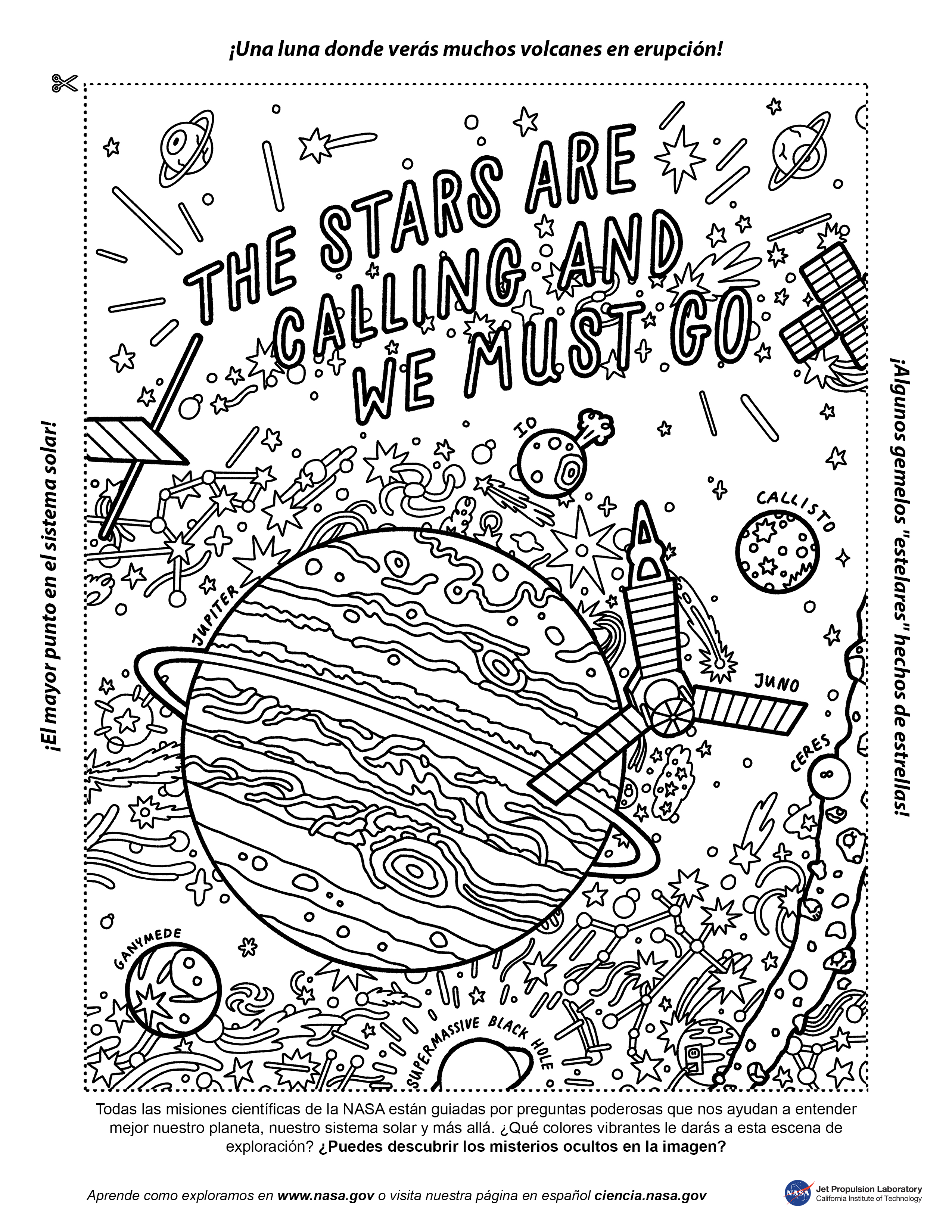Color Your Universe Week 2

November 16, 2020
| Language |
|
|---|
Here are a few NASA highlights featured in this coloring page:
- Fifth in line from the Sun, Jupiter is, by far, the largest planet in the solar system – more than twice as massive as all the other planets combined. Jupiter is a type of planet known as a gas giant. Its features include clouds of ammonia and water that form stripes and swirls, and the Great Red Spot, a gigantic storm about twice the size of Earth that gives the planet its iconic look.
- Scientists have discovered 79 (and counting) moons orbiting Jupiter, the most moons of any planet in our solar system. Of those many moons, the four largest – Io, Europa, Ganymede, and Callisto – receive the most intense scientific interest. They are known as the Galilean satellites, for Italian astronomer Galileo Galilei, who first observed them in 1610.
- NASA’s Juno spacecraft is the first mission to give scientists a detailed, up-close look at Jupiter. The Juno spacecraft has made dozens of close flybys, giving scientists insight into how Jupiter formed and evolved, and providing details of its gravitational and magnetic fields, and its atmosphere.
- Supermassive black holes are enormous, dense objects buried at the hearts of galaxies. A black hole's gravity is so powerful that it can pull in nearby material – dust and gas, and even stars! In fact, their gravity is so strong that not even light can escape them. Have you ever thought about what it’s like to visit a black hole? While we wouldn’t recommend it, here’s NASA’s Guide to Black Hole Safety.
What else can you uncover in the picture? Here are a few hints to help you out!
- The only moon with its own magnetic field?
- Some "stellar" twins made of stars
- The greatest spot in the solar system
- A moon where you'd see lots of volcanoes erupting


